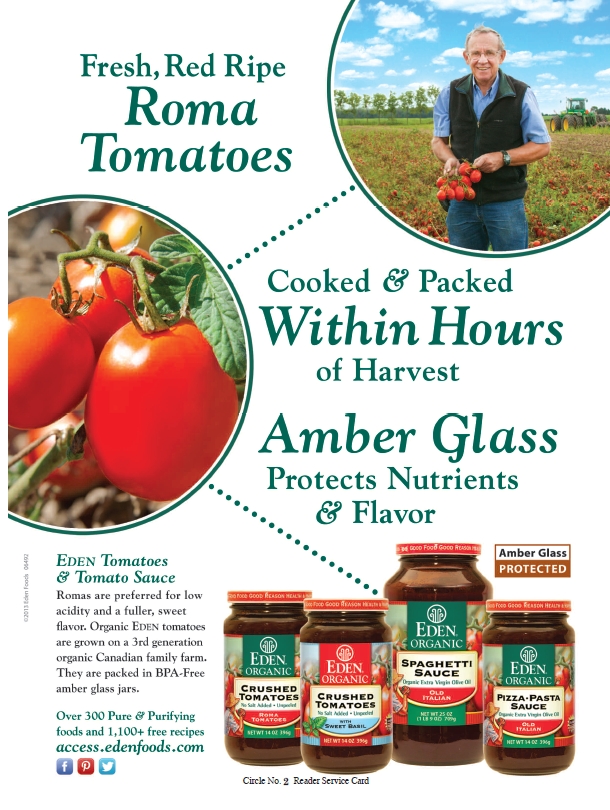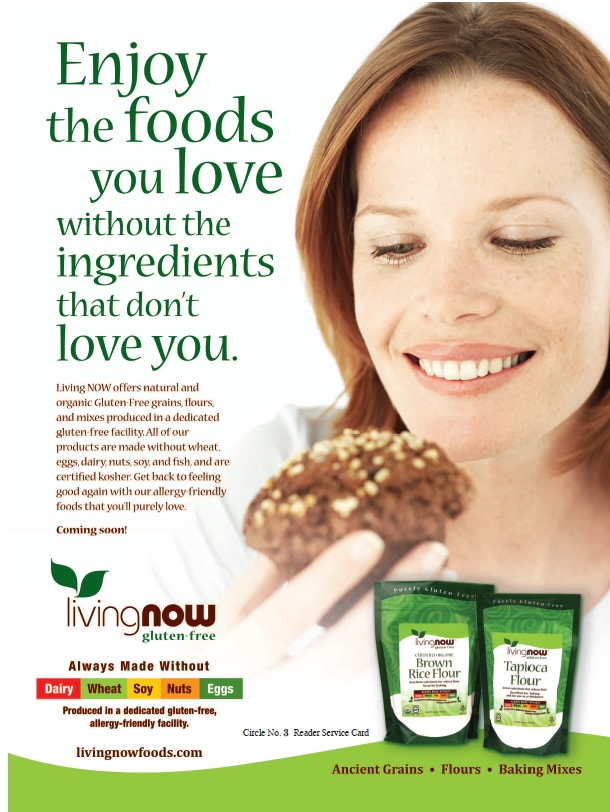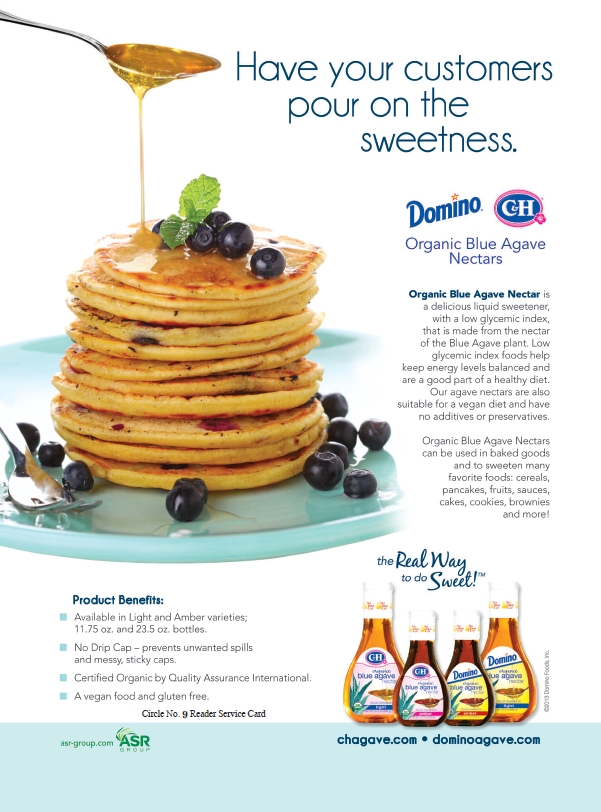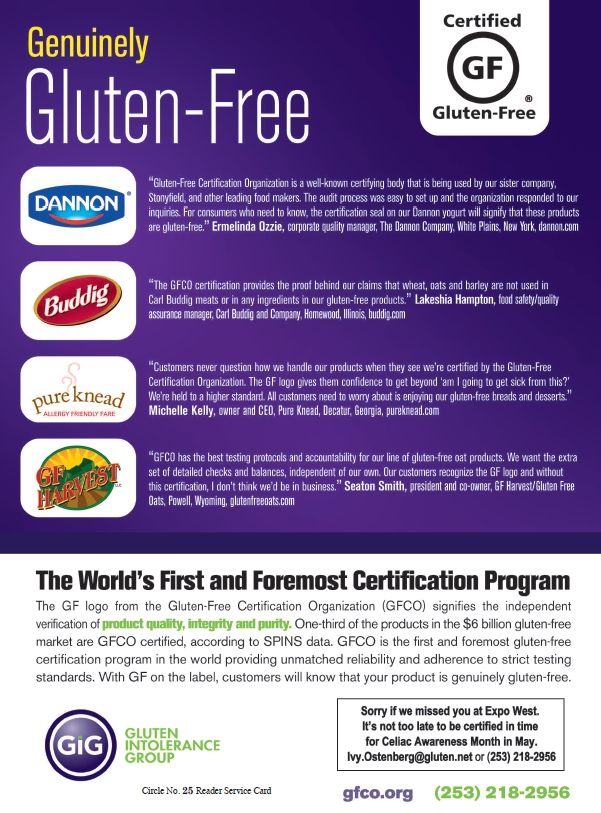Those that self-define as vegans or vegetarians were once a rare breed, at least in Western culture. Less so today: Last year’s Gallup poll revealed that 5% of people in the United States think of themselves as vegetarians. 2% identified as vegan, and there’s not a lot of overlap between the two; most respondents that called themselves vegan marked down that they were not vegetarians (1).
These numbers paint a clear picture. Leaving aside how different individuals may define each diet, one in 20 and one in 50 people commit to these two limited-diet lifestyles full-time. Some even combine them with other diets, such as a vegan gluten-free diet plan. In terms of customers walking around in your store, it’s not exactly an exotic bird sighting. In fact, natural products stores likely attract more of these consumers. Though it’s not clear whether these numbers are growing, many in the vegan and vegetarian products industry believe they are, and cite these statistics hopefully for the future of their businesses.
But the opportunity is larger than just the full-timers. Alternative-diet marketing and product development must now include many others if they want to expand their sales: Meatless Monday observers, pescetarians (vegetarians plus fish), flexitarians (“I’m vegetarian sometimes!”), weight watchers, budget conscious shoppers, allergy sufferers and those who may just want to try a vegan “meat” product or an almond milk because it’s different. We’ll hear why and how these consumers might be brought into the fold, as well as how vegan and vegetarian products are being improved and innovated daily, for everyone’s enjoyment.
Vegan Products: Not Just For Vegans  Anymore
Anymore
Food products geared toward alternative-diet consumers are not intended to be enjoyed only by them. These items can be appealing to a wide variety of people for many different reasons, and it’s up to manufacturers to seize upon those opportunities.
There are three primary reasons why people gravitate to meat alternative products, believes Eugene Wang, founder of Sophie’s Kitchen, Sebastopol, CA. “I think that these three reasons are pretty universal throughout the world,” he says, adding that they apply to both developed and developing markets. The first reason he cites is health. As more individuals become conscious of their cholesterol levels, fat intake and weight, more will look to replace at least some of the meat in their diets. He thinks this is why the vegan and vegetarian products industry has been growing at an even faster rate than the natural products industry as a whole.
“As a dairy-free company, our cheese and frozen dessert products are automatically lower in fat and cholesterol by virtue of the fact that they are created from a non-animal source,” says Elyse Hansford, vice president of marketing for Tofutti Brands, Cranford, NJ. This natural trait of many alternative-diet products is also flagged by Katherine Franklin, director of marketing for Follow Your Heart, Chatsworth, CA. Her company’s vegan and vegetarian spreads, salad dressings and cheeses are naturally gluten free products in addition to being a heart-healthy option, she explains. “This opens up the consumer base to those with high cholesterol, celiac disease and those who are gluten intolerant, allowing our products to fulfill a need for those outside of the vegan/vegetarian community,” says Franklin. Thus, it's entirely conceivable that vegan foods are on a shoppers' gluten free food list, for instance.
Indeed, there is a major area of overlap between products for those with dietary restrictions due to health concerns, and those designed for vegans and vegetarians. Jamie Schapiro, director of marketing for GO Veggie!, North Kingston, RI, points to the rise of food allergies, especially in children, as a need-based driver of interest in products also suitable for those on alternative diets.
According to Pediatrics, the journal of the American Academy of Pediatrics, one in 13 children has a food allergy, Schapiro notes (2). He thinks individuals with these conditions tend to explore the vegan and vegetarian market more than others. For example, products that don’t have real dairy or real cheese can be of great benefit to those with dairy allergies or intolerances. Many of the dairy-free products that his company sells, along with lactose-free products that contain casein and are therefore not vegan, are also cholesterol and trans-fat free, catering to that same health-conscious crowd previously mentioned.
One way to look at it is that for every substance of which a product is “free,” another group of consumers is potentially interested. Victoria Gray, marketing director of Daiya Foods, Vancouver, Canada, explains that her company’s dairy-free, soy-free and gluten-free products are also devoid of the top eight food allergens, and have zero cholesterol, trans-fats or preservatives. It is difficult, she admits, for consumers to change their diets significantly all at once. “But there are more and more options today that make it easy to make changes one meal at a time,” she says, noting that the popularity of Meatless Mondays and similar trends are a testament to that fact.
 Brad Lahrman, brand manager for Nasoya, Ayer, MA, says that his company’s research shows that so-called flexitarians are responsible for a large share of the tofu market. “They understand the health benefits of tofu, but are not ready to eliminate meat from their diet full-time,” he says. As consumers like these become more comfortable preparing meatless dishes, he explains, they may begin to transition to a more full-time alternative diet.
Brad Lahrman, brand manager for Nasoya, Ayer, MA, says that his company’s research shows that so-called flexitarians are responsible for a large share of the tofu market. “They understand the health benefits of tofu, but are not ready to eliminate meat from their diet full-time,” he says. As consumers like these become more comfortable preparing meatless dishes, he explains, they may begin to transition to a more full-time alternative diet.
Plant-based and dairy-free products have a huge amount of potential in Gray’s mind, as people start to consciously think more about food sources, ingredients and the impact of what they’re eating on their own health.
It’s this sort of expanded consciousness, extended beyond the self, that Wang cites as his second reason for interest in vegan-style diets. Environmentalists continue to point out how raising a cow and producing beef uses many times more energy than producing equivalent amounts of “meat” from soy, for instance.
“That’s why a lot of people who are environmentally conscious are starting to pay attention to plant-based meat alternatives; they want to do something for the world,” Wang says. The ocean is the last frontier we need to protect, he adds, and that instinct to preserve is one of the reasons his company’s seafood alternatives, made with the Japanese konjac root, may be appealing. There are also specific health concerns related to seafood, like mercury contamination, that may push some consumers to look for alternatives.
His third reason, and the one he feels may be most impactful in the future, is economics. He is seeing it in places like China and Vietnam, where it is getting to be much cheaper to produce and consume soy than it is to raise or eat real pork or chicken. Wang says the current pattern of meat and dairy production is not a sustainable path, and he predicts a major shift within several decades. For instance, if government subsidies were removed, dairy production might become economically uncompetitive with alternatives like soy and soy milk. Consumers, for price reasons, will begin to feel compelled to try these other options.
“The planet is just too crowded,” he says, and, “We’ve got to figure out something really innovative and creative” to begin to fix the sustainability problem. He sees meat alternatives as an answer, and while other companies are working on alternatives to land-based meat, his company specializes in seafood alternatives.
There is an increasing call for people to adopt plant-based diets, but Wang acknowledges these are not necessarily satisfying. That’s why developing alternatives that approximate what people are missing, such as konjac replacing some of the texture and experience of eating seafood, is important for consumers. Providing familiarity may help people to migrate over to new diets, he thinks. Like other companies, his is trying to develop meat alternatives that can be embedded in meals people enjoy, like seafood pasta, without changing the experience.
There are many other niches for these products  to fill. Non-vegans and vegetarians can now enjoy many of the improved alternative-diet products available today, and this is especially important for those who share a home with a vegan or vegetarian. Franklin notes that while her company’s products are mostly used by vegans or vegetarians, others are certainly fans of them, too. “The priority is always taste and quality—if it happens to be vegan or coincide with the dietary lifestyle of the consumer, that just makes it that much more appealing of a product,” Franklin says.
to fill. Non-vegans and vegetarians can now enjoy many of the improved alternative-diet products available today, and this is especially important for those who share a home with a vegan or vegetarian. Franklin notes that while her company’s products are mostly used by vegans or vegetarians, others are certainly fans of them, too. “The priority is always taste and quality—if it happens to be vegan or coincide with the dietary lifestyle of the consumer, that just makes it that much more appealing of a product,” Franklin says.
The ingredient-conscious are also drawn to natural meat and dairy alternatives. “More and more consumers across the spectrum are seeking out ‘clean label’ prepared food options. Often prepared vegan/vegetarian products provide consumers the ‘clean label’ options they’re seeking,” says Larry Praeger, vice president of Dr. Praeger’s Sensible Foods. “Also, most meat-alternatives, such as a veggie burger, are kept frozen, which makes them a more convenient protein option for families or those with busy lifestyles.”
One key to roping in more types of consumers is to continually offer “on-trend” ingredients and flavors. Praeger gives examples like his company’s products that feature sweet potato and kale, as well as globally-inspired flavors like Thai for veggie burgers. Making at least some of these products accessible for young kids can boost interest as well, which often means rendering them into fun, bite-sized shapes.
For Schapiro, the media has played a positive role in enhancing the profile of vegan and vegetarian lifestyles. High-profile celebrities like Betty White, Ellen DeGeneres and Bill Clinton have drawn attention to the trend among consumers. People from all backgrounds are eating more individual meals that are intentionally vegan or vegetarian, and more restaurants are offering menu items catered to these groups. Declining meat, egg and milk consumption serves as further evidence of a societal shift.
Meatless Marketing
All of these benefits and attractions offered by alternative-diet products must be broadcast in a tangible way to reach the consumer. This is just what’s been happening. “The marketing of vegan/vegetarian products is evolving to speak to more mainstream consumers who are looking for non-conventional options,” says Gray. She explains that the already noted attributes of her company’s products, like being allergen free, gluten free and low in fat, are included in product messaging and labeling.
 Though she believes the numbers of full-time vegans and vegetarians are growing, Hansford also touts the increased health-consciousness of the average consumer, as well as the louder voice of those with diet restrictions due to health. “We believe there is enormous opportunity to tap into this sentiment. Treating it less like a trend and more like an idea whose time has come, we are simply highlighting product attributes and applying those appropriate messages to the targeted consumer,” Hansford says.
Though she believes the numbers of full-time vegans and vegetarians are growing, Hansford also touts the increased health-consciousness of the average consumer, as well as the louder voice of those with diet restrictions due to health. “We believe there is enormous opportunity to tap into this sentiment. Treating it less like a trend and more like an idea whose time has come, we are simply highlighting product attributes and applying those appropriate messages to the targeted consumer,” Hansford says.
Innovative marketing is a keyword with Wang, who notes that his company has reached out to cholesterol and weight loss blogs, as well as ocean scientist blogs, thereby taking the firm’s specific message to inform people that aren’t necessarily vegetarians or vegans. Additional callouts on packaging mark Wang’s products as plant based and soy free. The move for his company to make products that are suitable for a gluten-free diet plan has also been a big step, Wang says, and catering to that market has been a natural progression.
Sometimes, the process of maneuvering in and around the vegan products space takes place in the opposite way. Rather than expanding the appeal of vegan offerings, marketers seek to add to the dietary habits of established vegans and vegetarians. Lahrman points out that kimchi vendors in the United States initially targeted Korean-Americans. But recently, a new market has been tapped by promoting these products as vegan.
Taking the perspective of the customer at the point of retail is Jeff Weidauer, vice president of marketing and strategy for Vestcom, Little Rock, AR. He details his company’s perspective on the vegan and vegetarian space, as providers of shelf-edge shopper marketing media to retailers and manufacturers. “Getting more consumers into the vegan/vegetarian fold requires education, in the form of explaining the benefits,” he says.
The main entry points for these diets, Weidauer reminds us, are usually an opposition to the use of animals for food, a search for a healthier lifestyle or a combination thereof. Therefore, tread lightly when pushing the benefits of an alternative diet, because talking about animal rights may be a turnoff for some. Then again, those who limit their diets for moral reasons may be put off by a focus on health benefits. Nevertheless, the negatives associated with a red meat-heavy diet are well-known, he says, and may be a good place to start.
Overall, empower yourself to engage customers about their diets. “Shoppers trust their local stores more than most other sources when it comes to food, so it’s the store that has the opportunity to present information that will appeal to and motivate shoppers who are slightly interested in the idea of eating better,” Weidauer says.
You’ll often need to respond to common questions about nutrition (for example, “What about getting enough protein?”). Weidauer notes that meat is considered to be the “center of the plate” by many people, so addressing what can replace that center in an alternative diet is a worthy endeavor. Providing both options and ideas is important to new converts or those doing a trial diet change. He says, “All of this can—and should—be done in-store, and even at the shelf edge. In addition, merchandising meatless meal options that make planning easy is another step to getting shoppers over the fear of change.”
Making products that fall into the alternative-diet category more generally appealing and accessible can pay dividends, says Hansford. Those that don’t identify with lifestyle labels like “vegetarian” may be reached by integrating these products beyond the natural foods section, along with having easy-to-read nutritional benefits listed plainly on the front of the package. These are time- saving factors for busy shoppers who may not necessarily be looking for alternative options.
Better, Healthier and More Melty
Of course, two obvious and primary reasons for the increased popularity of vegan and vegetarian products are improved quality and quantity. “I think the reality is that there are many more products out there today. The products are better, and they’re more accessible, than they were about 10 years ago,” says Schapiro. Many alternative-diet products are found in major supermarkets today, and retailers and manufacturers are using the heightened profile of these diets to push more consumers in their direction.
Praeger illustrates how this change is met with by consumers. “Not that long ago, consumers would have one or two choices for veggie burgers on a freezer shelf. Now they’ll find numerous options with different flavor and ingredient profiles,” he says. Taste is king, Schapiro adds, and though it was formerly a barrier, he compares the situation for vegan and vegetarian products to that of the gluten free space years ago. Once viewed as less than appealing, these products have seen an explosion in popularity. “A lot of companies, including us, have expanded their R&D budgets. We’ve hired people to create new unique, great tasting products,” says Schapiro.
Products such as a recently introduced dairy-free vegan cream cheese help to show where the progress is. “It’s a cream cheese that is cultured just like real, dairy cream cheese. So it cultures for a 24-hour period, and gives you that same mouth-feel and taste,” says Schapiro of his company’s product. He emphasizes that it is not just about the ingredients with these items, but the production process and functionality of the end product. Dairy-free cheese shreds once again present a code to be cracked, he says, in figuring out how to get a product that tastes good that also melts and stretches like real cheese.
The quest for melty cheese is a universal one in this category. “Our products are tested extensively to ensure the “melt ability” factor and quality of performance under high heat when used as an ingredient for cooking,” says Hansford. The results of this labor for her company include a dairy-free ricotta cheese and a dairy-free cheese ravioli made with egg-free pasta. On the sweet side, says Hansford, a dairy-free frozen dessert bar sweetened with stevia was also introduced.
Franklin says her company’s line of shredded cheese uses sustainably grown and harvested organic palm fruit oil, resulting in a taste and melt factor similar to traditional cheese and allowing, for example, for a genuine pizza eating experience. “We always love the moment when a non-vegan consumer tries our cheese and their faces light up with surprise by how much they actually like it,” Franklin says.
In trying to accomplish something like a truly stretchy and melty non-dairy cheese, Gray notes that companies like hers can create gateway experiences for some shoppers.“Delivering a delicious taste experience is even more important for those who are making small changes and are not yet motivated or committed to making a full-scale change to their eating habits,” she says.
There are also the nutritional needs of vegans and vegetarians to be catered to. Lahrman explains that his company’s tofu is fortified with B vitamins and calcium, important nutrients in which consumers avoiding meat are often deficient. He says that in addition to improving the smoothness of its vegan sandwich spreads, his company reformulated them to be a good source of vitamin B12, which he describes as a central nutrient to the health of the brain and nervous system.
For his part, Wang says, “I see a lot of opportunities in developing tuna alternatives,” a food where mercury contamination is often an issue, and yet is such a staple for many people. The goal for his company is to give people something to chew on similar to tuna, so they can still have their tuna salad while protecting the ocean and avoiding toxins. Other new products based on the high-fiber, low-calorie konjac root include coconut shrimp and smoked salmon alternatives. The initial feedback Wang’s company received was that there was too much soy in the market, which he says led them to konjac. Now, they are focusing on trimming down their labels to reflect a minimally processed product.
“Vegan products used to be niche,” says Schapiro, who goes on to say, “The products that we’re putting out are building credibility in the market, not just for us, but for the space.” That credibility allows some people to take the leap of faith to a new lifestyle, or at least to make those first steps easier. “Taste and accessibility are now expectations for the alternative-diet consumer,” says Lahrman. He explains that consumer awareness is driving further innovation from manufacturers (like vegan gluten free products), and traditional retailers have realized the value of the alternative diet consumer, resulting in premade shopping lists and areas of the store devoted to these special diet products. Natural retailers can consider distributing a list of allergen and gluten free foods that are vegan for shoppers to follow in their store. WF
References
1. F. Newport, “In U.S., 5% Consider Themselves Vegetarians,” http://www.gallup.com/poll/156215/consider-themselves-vegetarians.aspx, accessed Feb. 28, 2013.
2. “1 in 13 U.S. Children Suffer from Food Allergies, FAI-Sponsored Study Finds,” Food Allergy Initiative, http://www.faiusa.org/page.aspx?pid=595, accessed Feb. 28, 2013.
Published in WholeFoods Magazine, April 2013










